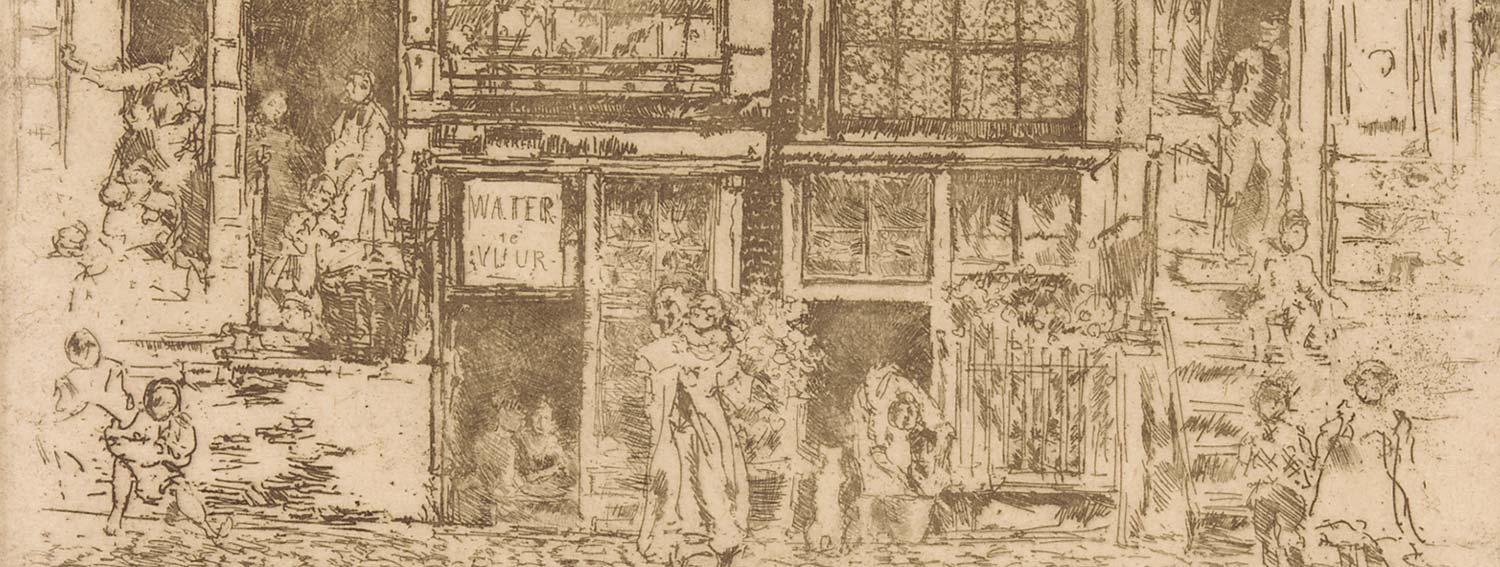The Whistler holdings of the Freer Gallery of Art are the most comprehensive of any collection in the world: 130 paintings, 174 drawings, and 946 prints, as well as a wealth of archival and bibliographic materials. The 85 oils include both early and late examples of representative portraits, landscapes, nocturnes, and Japoneseque costume pictures, as well as the only extant example of Whistler’s work in interior design, the Peacock Room. Watercolors, pastels, and drawings range from experimental studies to finished exhibition pieces; our print collection encompasses etchings and lithographs; it is comprehensive and includes many rare and unique impressions. Whenever possible, Freer purchased preparatory and related drawings to complement major works in his collection, as well as letters, exhibition catalogues, press clippings, and other documents. Because of this supporting material, the museum has been a hub for Whistler scholarship and has indeed realized Whistler’s promise to Freer in 1899, to help him acquire “a fine collection of Whistlers!!”—perhaps the collection.
Whistler and Watercolor
Combining the methods of art history and conservation science, this study, under the leadership of curator Lee Glazer, paper conservator Emily Jacobson, and senior scientist Blythe McCarthy, focuses on the more than 50 watercolors by James McNeill Whistler (1834-1903) in the Freer Gallery of Art. Works in the collections of our consortium partners and selected additional collections in the United States and Britain are also part of the project, which will synthesize technical examination and analysis of Whistler’s paper, pigments, and working techniques with a comprehensive survey of the history of the works’ exhibition and reception in Britain and the United States, establishing a baseline of information to which other collections of Whistler watercolors can be compared. From an art historical perspective, this study will clarify the relationship between preliminary studies and finished work in Whistler’s oeuvre; illuminate the relationship of Whistler’s watercolor practice to his peers on both sides of the Atlantic; and explain the connection between Whistler’s watercolor work and his experiments in other media. This project, therefore, aims to fill a major gap in Whistler studies; it also promises to have a broader significance to art historical scholarship in an international context, contributing to a growing body of literature on the significance of watercolor in late 19th-century America and Britain. The research will culminate in 2017 with an exhibition and accompanying publication. Early research was supported by a grant from the Smithsonian Scholarly Studies Program.
Whistler Object Study Workshop
June 9–12, 2014
In conjunction with the Lunder Consortium for Whistler Studies, the Freer Gallery of Art organized and hosted a four-day object study workshop for advanced graduate students and recent PhDs in American or British art history. Led by curators and conservators, the workshop provided an immersive experience in the study of paintings, prints, and other works on paper from the Freer’s unparalleled collection of art by James McNeill Whistler. As a culminating activity, participants contributed a short essay on an etching chosen from the Second Venice Set that appears on the web feature for the exhibition Fine Impressions: Whistler, Freer, and Venice.
The Story of the Beautiful: Freer, Whistler, and Their Points of Contact
The Peacock Room Comes to America app for iPad and iPhone
https://itunes.apple.com/us/app/peacock-room-comes-to-america/id671150763?mt=8
Palaces of Art: Whistler and the Art Worlds of Aestheticism (free downloadable edition from SI Scholarly Press)
http://opensi.si.edu/index.php/smithsonian/catalog/book/41
Banner image detail: The Embroidered Curtain, 1889, etching on paper, Freer Gallery of Art, Smithsonian Institution, Gift of Charles Lang Freer, F1906.126.
